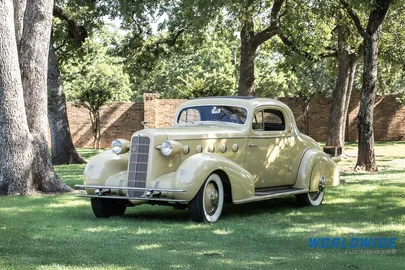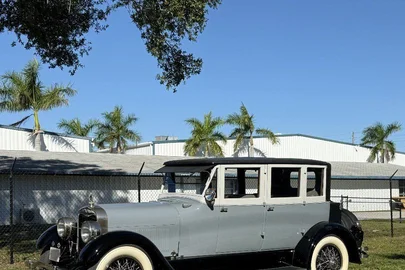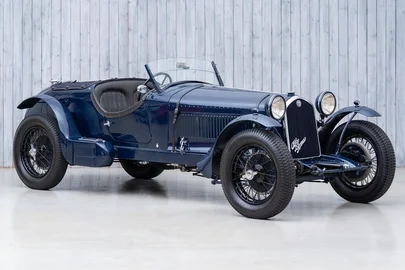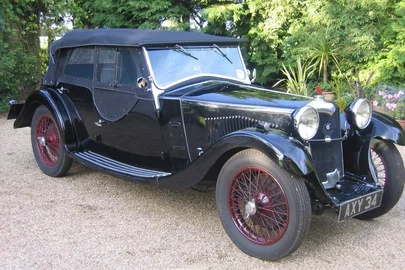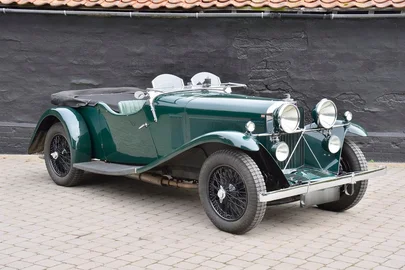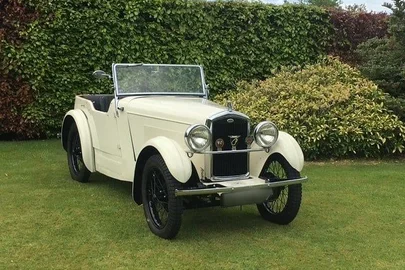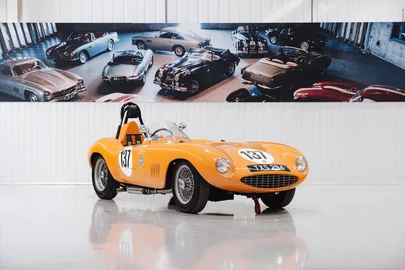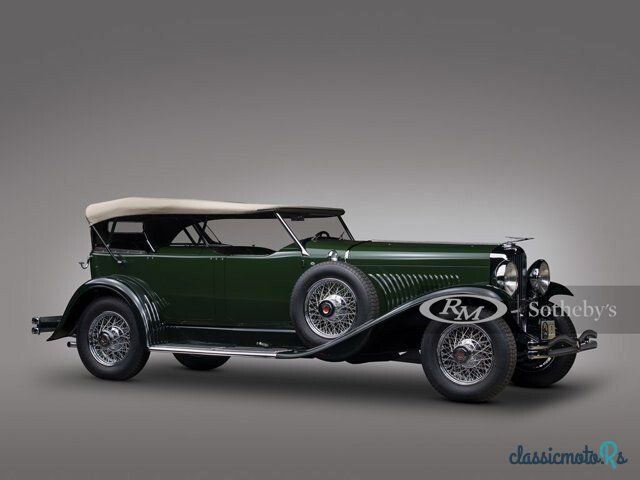



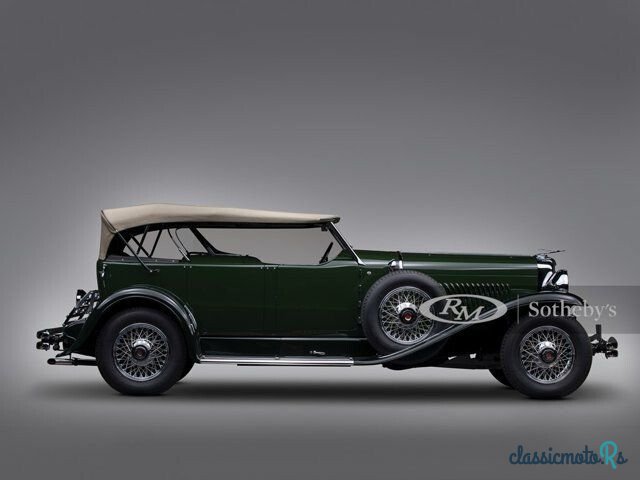

6 photos
1929' Duesenberg Model J
Report This Ad!Rate This!Bookmark This
NegotiablePublished 27 July 2021ID: nj3Zwn
Expired
4 years, 5 months ago
4 years, 5 months ago
Information from the owner
Age: 92 years
Seller's comments about 1929' Duesenberg Model J
To Be OFFERED AT AUCTION WITHOUT RESERVE at RM Sothebys Monterey event, 12 - 14 August 2021. One of three original butterfly dual-cowl phaetons by Murphy on the Model J chassisSuperb restoration by respected marque specialist Steve BabinskyA road-tested veteran of three Duesenberg Tours, the Pebble Beach Motoring Classic, and the Colorado GrandExtraordinarily well-maintained, continuously and without object to costA meticulously restored and truly fully sorted Model J Please note that this lot is titled as a 1930. THE MURPHY DUAL-COWL PHAETONThe coachwork by the Walter M. Murphy Company of Pasadena, California, has become so linked with the Duesenberg name that it is easy to forget the firm worked on Model J chassis for scarcely three years. Yet in many ways Murphy was the ideal shop to work on the Duesenberg, an automobile that was most frequently favored not by conservative, well-established families but by the sportsmen and women who could appreciate what twin cams, 260 horsepower, and the resulting aggressive speed could add to their already devil-may-care lives. It was the well-to-do of this mindset who flocked to Southern California in the late 1920s and early 1930s, and Murphy met their sensibilities literally line-for-line with cleanly drawn sporting coachwork ideally suited to the spirit of the Model J.Many of the best of these designs flowed from the pencil of Franklin Q. Hershey, a slim, bespectacled artist in Murphys studio. Hershey excelled at designs that formed a single shape, with few ostentatious additional chrome folderols to distract the eye. This was never better demonstrated than on the dual-cowl phaeton design he drew for the Model J. The rear cowl, a cumbersome addition usually to even the best designs of this type, was exceptionally well integrated, fitting virtually flush with the tops of the doors. The rear windshield and the cowl itself were both split down the center, and each half of the cowl would lift to permit a passenger in and out a feature that came to be known, colloquially, as the butterfly cowl, and became a signature of Murphy dual-cowl phaetons of this era.J-403, MARRYING MANVILLE, AND THE EARLY YEARS OF COLLECTINGThree Murphy Dual-Cowl Phaetons were delivered on the short-wheelbase Model J chassis, of which the example offered here is one of two produced to this design, without exterior door handles and with concealed rear door hinges and carefully concealed windows in the front doors. Body number 987, it was originally delivered on car number J-336 to Harry W. Curran of Chicago, but passed within a few months to Tommy Manville, the oft-married heir to the Johns-Manville asbestos fortune, whose matrimonial antics made him a feature of the society pages in this era. One soon-to-be-ex-Mrs. Manville later recalled finding her husband not present in bed on their wedding night; she soon located him in the carriage house, performing mechanical work on a Rolls-Royce. That was Tommy Manville, a man whose passion for automobiles was probably more heartfelt than his passion for the ladies. He was a prolific acquirer of the best new cars from the late 1920s through the 1930s, often plucking the latest creations from auto show stands.In the early 1930s J-336 returned to the New York Duesenberg Factory Branch, but it remained in the Empire State as it changed hands through a selection of short-term owners in the years before World War II. By 1955 it had migrated a short distance to New Jersey, and that April was sold by A.B. Heinsohn of Convent to C. Richard Bell of Reading, Pennsylvania. Dick Bell was an extremely active early member of the Antique Automobile Club of America, the Auburn Cord Duesenberg Club, and the Classic Car Club of America, participating in many of their early activities on the East Coast. His taste in automobiles was extraordinary, with his collection also including the revered Packard Car of the Dome that had headlined the 1933-1934 Chicago Worlds Fair.As was common in this early enthusiast era, Bell exchanged the Duesenbergs body with another chassis. Chassis number 169 had originally carried a Murphy Convertible Coupe body and engine number J-145, subsequently replaced early in life with the current unit, number J-403. Bell had J-403 / 2169 crowned with the Murphy Dual-Cowl Phaeton body in the course of a full restoration by the Wendling Brothers, who finished the car in an unforgettable creamy white with red leather interior a livery in which the car soon became famous through its many Eastern show appearances over the next three years. In many ways, Murphy Dual-Cowl Phaeton number J-403 was probably the best-known Duesenberg on the Right Coast in this period.In January 1958, soon after the car had won its CCCA Primary First Prize, Bell sold J-403 to William Swigart, Jr., for his familys automobile museum in Huntingdon, Pennsylvania. Aside from very infrequent ventures out to shows, the car would live in the museum for nearly half a century.A CAR TO KEEPIn the fall of 2007, J-403 was sold to satisfy the estate of Helen Swigart, thus returning it to market for the first time in 49 years. Its fortunate buyer was Paul Andrews, who shortly submitted the car to Steve Babinskys Automotive Restorations of Lebanon, New Jersey, to be returned to its original classic elegance. In a recent conversation, Mr. Babinsky noted that the body retained all of its original sheet metal and wood, preserved during restoration aside from minor repairs to the fenders, and that the engine was fully rebuilt with new Carillo rods. At completion of the work, J-403 was shown at the 2009 Pebble Beach Concours dElegance, winning 2nd in Class, followed by Best in Class honors at the Amelia Island Concours dElegance the following year. It went on to achieve a Senior First Prize with 99.5 points at the CCCA Annual Meeting in Dallas in 2012.The story of J-403 in the Andrews ownership does not end in the typical fashion however, with a stack of restoration receipts and tales of concours victories. It is, frankly, one of the few Model Js that has enjoyed more of its post-restoration career on the road than on the show field. There are the long-distance tours, of course the tests of a cars quality of restoration and maintenance that included no fewer than three of the annual Duesenberg Tours, the 2011 Colorado Grand through the Rocky Mountains, and, that same year, the Pebble Beach Motoring Classic between Seattle and Monterey, together accumulating about 5,500 very reliable miles.Yet the car has also been regularly used around the Andrews home state of Texas, for the pure joy of driving. The receipts for the maintenance through the years are thoroughly impressive, with literally every single need rapidly attended to by the highly skilled Andrews team to ensure that J-403 would always be 100 percent sorted and ready to not just run, but to perform superbly, as-new, at the speeds for which it was manufactured and over both long and short distances. Most recently, new solid 19/700 rims were made for the car specifically to fit radial tires, while the original set of 19/750 split-rim wheels and bias-ply tires accompany the car loose. While the odometer reads scarcely 1,500 miles, that is low due to its having been rebuilt; John Standifer, the Andrews longtime collection manager, estimates that Paul and Chris Andrews together put over 7,000 miles on the car in the last dozen years both on tours and in normal use. After all those miles of normal use, J-403 still remains extremely attractive in excellent overall cosmetic condition, with the only major indication of use being the typical loss of porcelain on the exhaust manifold. Inspection of the car shows that it retains the original frame and firewall, both correctly numbered 2169, as well as the original engine number J-403, including both the correctly numbered original bell-housing and the original crankshaft, number 403.Paul Andrews loved Duesenbergs, and several examples of the marque passed through his hands over the years. J-403, however, is the one he kept and exercised, and which became, perhaps more than any other automobile in the collection, indelibly associated with him and his ethos: an extraordinary automobile, superbly restored, maintained to the very highest of mechanical and cosmetic standards, and treasured not just for its beauty but for its performance.To view this car and others currently consigned to this auction, please visit the RM website at rmsothebys.com/en/auctions/mo21.
